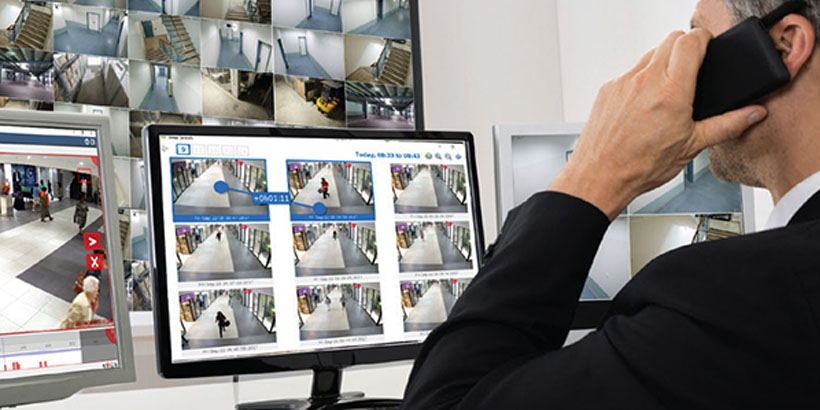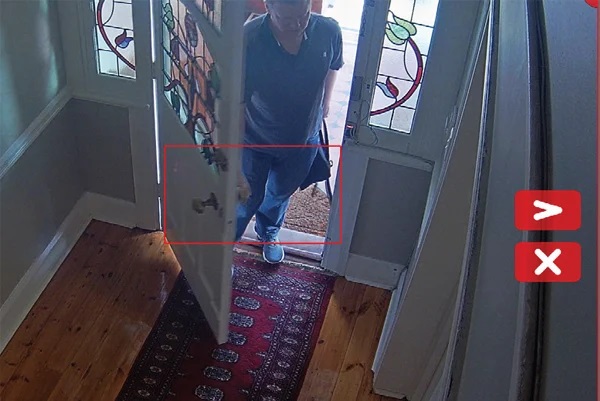 Video technologies have advanced exponentially in recent times, with many of the latest developments making the management of systems simpler, faster and more efficient. Increased capacities for archiving and processing video have also driven the benefits associated with the capture of ever greater amounts of data, which places a growing emphasis on the need for rapid and painless searches and retrieval of footage. Smart video systems might be capable of recording video and analysing its content for a diverse range of tasks, but such systems will not offer a credible return on investment if the right information cannot be found, as and when it is needed.
Video technologies have advanced exponentially in recent times, with many of the latest developments making the management of systems simpler, faster and more efficient. Increased capacities for archiving and processing video have also driven the benefits associated with the capture of ever greater amounts of data, which places a growing emphasis on the need for rapid and painless searches and retrieval of footage. Smart video systems might be capable of recording video and analysing its content for a diverse range of tasks, but such systems will not offer a credible return on investment if the right information cannot be found, as and when it is needed.
The development of smart options for video surveillance has significantly changed the way in which businesses and organisations use the technology, and while this is to be welcomed, it does present some challenges for those looking to maximise the benefits available from their investment. Users collect and process greater amounts of video data than they did a few years ago. This is due to many sites deploying a larger number of cameras, and also the collection of data for non-security purposes.
Historically, sites would install cameras in vulnerable areas such as entrances and exits, as well as high risk spaces such as cash handling areas. The result was most applications used few video streams, and when an incident occurred, it was relatively easy to find the footage. That the video system was exclusively used for security also helped find the required data.
Today’s smart video systems boast increased capabilities, both in terms of benefits and capacity for managing video. This, combined with lower costs for cameras, has seen an increase in the number of devices used in many locations. Video is used widely for security and safety, albeit with a greater number of cameras, but the captured data is also utilised for a variety of other purposes too.
Video can be used to provide business intelligence, revenue generation, sales and marketing support, building management, traffic control, etc.. It is increasingly used to generate metadata which can be utilised for the initiation of automated actions and notifications, or to trigger peripheral systems or collate and report on business operations. Many of the benefits on offer from modern video technology enhance the return on investment.
Video data is exceptional for security tasks because it captures information that people can easily understand. For example, if a camera is surveying an entrance, the user knows it will gather information about who enters or leaves the area. They can also receive a notification is someone loiters near the door.
However, security is not always about the expected. Unanticipated events will occur, and modern video solutions include a variety of search features which help operators to manage these. Functions such as timeline search and motion search allow users to retrospectively find the moment when an asset disappears or when an incident starts, usually by working backwards from a specified event. For example, if someone is seen slumped by the door, the footage can be reviewed to see what occurred prior to that moment.
However, despite the ability of operators and others to quickly comprehend visual information, modern video surveillance systems have one downfall: the sheer volume of data that is captured.
Video surveillance systems carry out data collection. The data is predominantly visual, but may also include metadata, system status information and audio information. A single video camera generates a significant amount of data at a constant rate. When a system with dozens (or hundreds or thousands) of cameras is considered, the volume of data being captured can become overwhelming if an operator needs to manually scrub through footage to find evidence or useful information.
The volume of data generated by video surveillance systems is both a blessing and a curse. If an event occurs, the system will have captured information to help assess what has happened. However, finding the right information can be labour-intensive and fraught with error. Thankfully, today’s smart video management systems, such as CathexisVision 2020, include a range of functions to help find critical footage, quickly and easily.
Object classification
Video cameras capture footage from a specified scene around the clock. This approach means that if an incident occurs, even when least expected, video will be stored which shows what happens. The flipside of this is much of the footage captured by the system will not show anything of interest. If, for example, a site has an external area between two buildings, a camera might be used to see who enters and exits.
If an operator is tasked with finding video of a suspect who crossed from one part of the site to the other, they’d typically scrub through the footage from the relevant camera. If there is not a lot of activity and they’re viewing an empty scene, their most likely reaction is to increase the replay speed. If they still see nothing, they might increase it again. If the suspect moves quickly, there’s a high risk of the operator missing them.
However, the use of AI-enabled object classification can significantly increase the chances of finding the relevant footage. Object classification works by identifying objects in the video stream: people, vehicles or animals. Even with minimal information about the time of the incident, an operator can implement a search which only highlights video including people.
Object classification is a significant benefit when combined with other methods of searching. For example, combining a localised motion search with object classification would highlight video clips where a person exited or entered a specific doorway. Object classification applies an additional filter which enhances the accuracy of searches, enabling the operator to be more efficient when dealing with incidents.
Advanced searching
The search capabilities of CathexisVision includes motion search, snap search and activity trails. These advanced options supplement the more traditional approaches to video search, such as using the timeline or time and date. Basic searches, where a location and time are known, can make use of the timeline in the playback screen. This is simply dragged to find footage of interest, and start and end points can be set to identify a time window. The timeline also includes identifiers for motion-based activations.

Of the smart search options, the simplest to deploy is motion search. This can be accessed from the playback screen, either via a side tab or by using a contextual menu. CathexisVision’s motion search uses stored metadata. The upside of this is that searches are faster and more accurate. The operator simply selects the region of interest in the camera scene and starts the search. Results are then flagged in the timeline.
Because the search uses metadata rather than re-analysing recorded footage, it is beneficial when an incident is happening and timing is vital. Some less advanced systems will reanalyse the archived video when carrying out a motion search, which is slower and more resource-heavy. If an incident is occurring, this might create delays which result in required actions being missed.
Snap Search allows the interrogation of captured data through the use of snapshots or thumbnails. It presents a series of still images throughout a defined time window. These can be used when searching for an incident. What is beneficial about the CathexisVision version is when narrowing the search period down, instead of adjusting the timeline, you simply select a start snapshot and then drag it to the end time snapshot. This then resets the start and end times. This allows the search time window to be decreased, finding the moment when an incident occurred. It is simple, intuitive, and speeds up the search process.

Another interesting search feature is Activity Trails. This is ideal for searching in scenes were activity is not expected, such as sterile zones. It displays a time-stamped colour-coded overlay on the recorded scene, highlighting the ‘trail’ of any motion. The colour coding relates to time windows. When the operator clicks on the highlighted area, the linked footage is shown.
Activity Trail can also be used on live footage, but as a search tool it is fast, effective and allows a synopsis-type presentation which can allow operators to carry out powerful searches based on approximate time and location.
The feature is toggled on or off, and when in use the operator simply selects a time. The VMS will then present overlays for motion which occurred up to an hour before the selected time, through to an hour after it. If the operator has an approximate idea of when an incident occurred and in which area, the function makes finding and reviewing relevant video data a simple and intuitive task.
Where integrations with data-based systems have been implemented, it is also possible to conduct searches based upon data strings. Transactions on a range of systems can be used as search criteria. This will allow a host of options such as finding footage linked to people using access control to pass through a protected door, vehicles based upon ANPR records, intrusion alerts, no sale till openings flagged by a POS system, etc..
The CathexisVision Alarm Management Gateway allows the remote management of alarms, events and incidents. As well as enabling operators to respond to predefined events, it can also be used to aid searches, filtering incidents or system alerts. This aids efficiency in larger sites, allowing a variety of inputs to be interrogated.
Finally, bookmarks can be searched based upon data attributed to them. It’s more of a management tool than a video search function, but it simplifies the process when compiling reports on incidents or creating audit trails. An operator can quickly and easily reference previous events when analysing incidents or alarms.
In summary
CathexisVision 2020 combines the advanced search filtering of AI-enabled technology with advanced searches from a VMS, delivering accurate and reliable search options with an intuitive and easy-to-use interface.
Motion search is fast and easy, Snap Search makes the process simpler, and Activity Trail delivers an easy-to-use synopsis tool for sterile zones. When combined with Object Classification, CathexisVision 2020 eliminates typical issues associated with searching for relevant video on a multi-channel solution.

